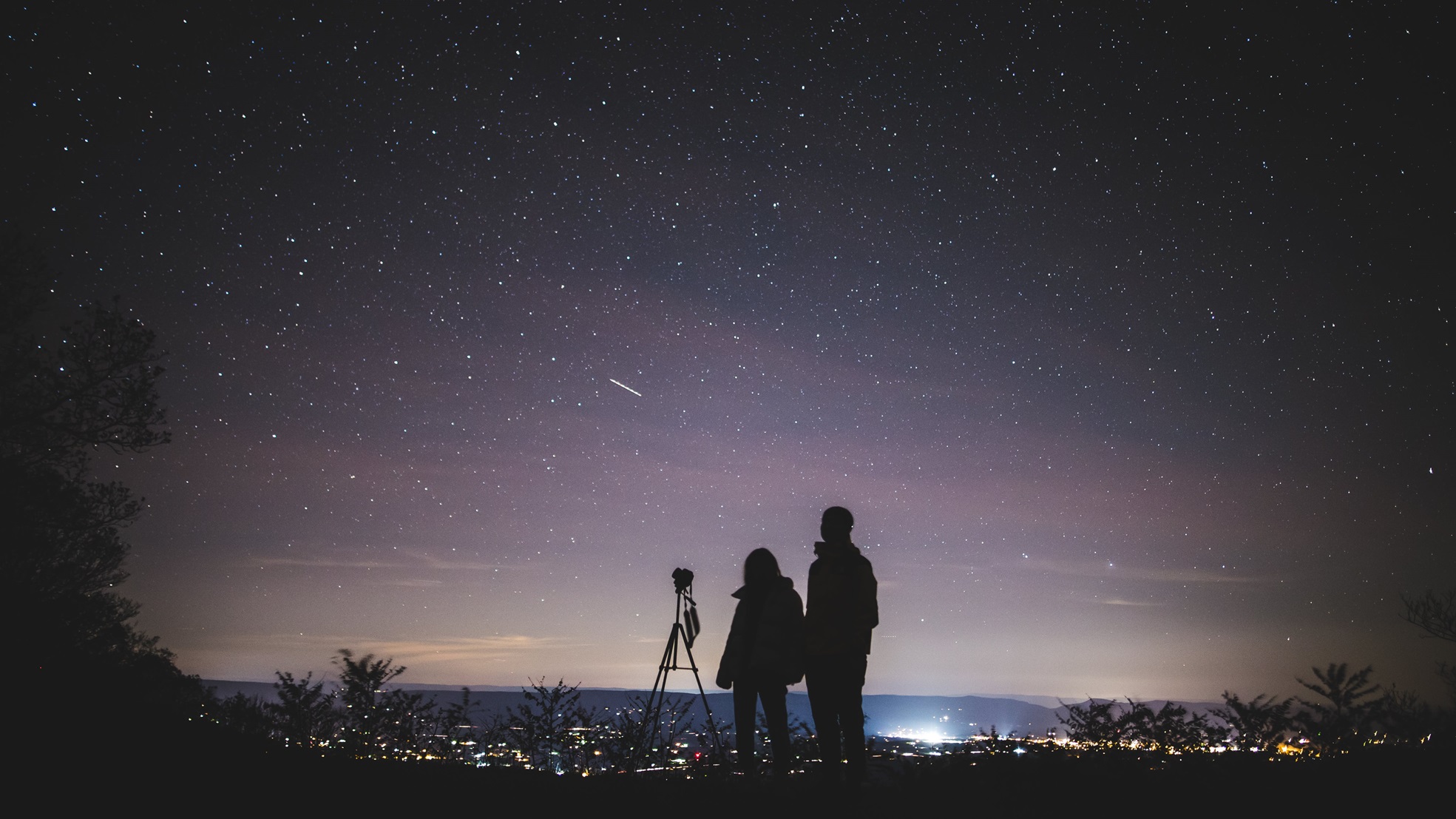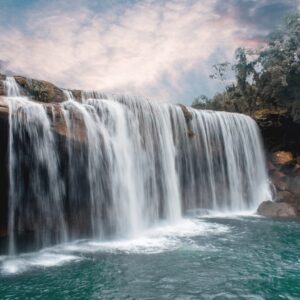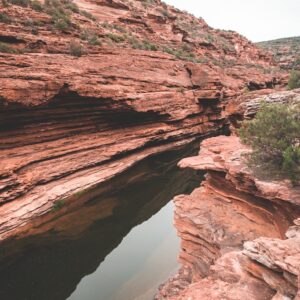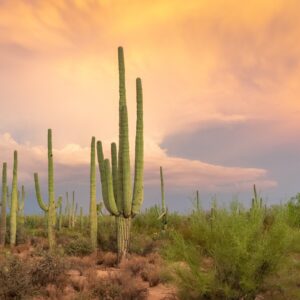In the midst of Arizona’s high country, a captivating celestial spectacle unfolds each night. Flagstaff, a charming city nestled within the Coconino National Forest, boasts some of the darkest skies in the United States. This makes it a paradise for stargazers, astronomers, and nature enthusiasts who yearn to experience the brilliance of the night sky. As a designated International Dark Sky City, Flagstaff has taken extraordinary measures to protect and preserve its celestial wonders, making it a haven for anyone seeking to explore the mysteries of the universe. Join us as we embark on a journey to discover Flagstaff’s dark skies and the mesmerizing world of stargazing.
A Dark Sky Oasis
Flagstaff’s exceptional stargazing conditions are rooted in a conscientious effort to maintain a naturally dark environment. As one of the world’s first cities to receive the International Dark Sky City designation, Flagstaff has adopted stringent lighting ordinances to minimize light pollution and protect the pristine night skies. Bylaws that require shielded outdoor lighting and limit excessive illumination have helped preserve the city’s unique celestial allure.
Light pollution, the artificial brightening of the night sky due to the excessive use of artificial lighting, can obscure stars, planets, and other celestial wonders. In Flagstaff, residents and businesses alike have embraced the importance of minimizing light pollution, fostering a community that values and protects its precious dark skies.
Lowell Observatory: Pioneers in Stargazing
At the heart of Flagstaff’s stargazing tradition is the renowned Lowell Observatory. Founded in 1894 by Percival Lowell, this historic institution has played a pivotal role in our understanding of the cosmos. Among its many achievements, the observatory is famous for the discovery of Pluto by astronomer Clyde Tombaugh in 1930.
Today, Lowell Observatory continues to advance our knowledge of the universe through research and public outreach. Visitors can explore its state-of-the-art facilities, attend fascinating astronomy lectures, and, of course, partake in unforgettable stargazing experiences.
The observatory offers nightly programs that allow participants to peer through a variety of telescopes, from historic instruments to modern marvels. Observing celestial objects such as distant galaxies, planets, and nebulae is a mesmerizing experience that ignites a sense of wonder and curiosity.
Sunset Crater Volcano National Monument
In close proximity to Flagstaff, Sunset Crater Volcano National Monument provides a unique stargazing setting. This dramatic volcanic landscape, shaped by eruptions nearly 1,000 years ago, offers a distinct opportunity to explore both Earth’s geological history and the beauty of the night sky.
The park hosts regular night sky programs that provide a holistic experience of nature’s grandeur. With a backdrop of the dark skies, the silhouettes of ancient volcanic formations come to life. Visitors can learn about the park’s natural history, gaze at the stars through telescopes, and immerse themselves in the serene stillness of the high desert.
Lockett Meadow: A Stargazing Retreat
For those in search of a more secluded stargazing experience, Lockett Meadow is a hidden gem. Located in the San Francisco Peaks, just north of Flagstaff, this picturesque area is a meadow surrounded by dense forests and embraced by the Kachina Peaks Wilderness.
Camping is available at Lockett Meadow, and while the facilities are basic, the remote location ensures minimal light pollution. Under the canopy of the dark skies, visitors can set up their telescopes or simply lie on a blanket, gazing up at the stars. The Milky Way, a spiral arm of our galaxy, is often visible with the naked eye, stretching majestically across the heavens.
As you take in the celestial panorama, the sound of the wind rustling through the pine trees and the crisp mountain air create an immersive experience that connects you with the natural world.
Flagstaff’s Star Parties
Flagstaff’s dedication to sharing the wonders of the night sky extends beyond the observatory. The city hosts regular star parties, providing residents and visitors with opportunities to gather and explore the cosmos together. During these events, amateur astronomers and seasoned stargazers come together to share their knowledge and passion with the public.
Star parties often take place at various locations around the city, including Buffalo Park, where attendees can enjoy breathtaking views of the San Francisco Peaks and the starry heavens. These gatherings offer a sense of community, where people of all ages can bond over their shared love for the night sky.
Meteor Crater: A Cosmic Impact Site
In the vicinity of Flagstaff, another geological wonder lends itself to stargazing experiences: Meteor Crater. This colossal impact site, created by the collision of a meteorite roughly 50,000 years ago, offers a unique perspective on both Earth’s history and the vastness of the universe.
During Meteor Crater’s stargazing events, participants have the opportunity to explore the night sky from a site linked to cosmic phenomena. Telescopes are set up near the crater’s rim, offering views of celestial objects while reminding attendees of the ongoing cosmic events that shape our world.
The International Dark Sky Park Movement
Flagstaff’s commitment to preserving its dark skies is part of a broader global movement. The International Dark-Sky Association (IDA) is an organization dedicated to reducing light pollution and protecting the natural nighttime environment. The IDA works with communities, businesses, and parks worldwide to promote responsible lighting practices and preserve the night sky for future generations.
Flagstaff’s role in the IDA’s International Dark Sky City program sets a shining example for other cities and communities seeking to protect their own night skies. The city’s continued efforts to raise awareness about light pollution and promote responsible lighting have made it a beacon of hope in the fight to preserve the world’s dark skies.
The Magic of the Night Sky
Flagstaff’s dark skies offer an enchanting opportunity to immerse oneself in the celestial wonders of the universe. As you gaze upward into the ink-black canvas scattered with stars, planets, and distant galaxies, a sense of humility and wonder fills your soul. The ancient light from these celestial bodies, traveling vast distances across the cosmos, reaches us on Earth, serving as a reminder of the interconnectedness of all things.
Whether you’re a seasoned astronomer or simply someone seeking a moment of awe and inspiration, Flagstaff’s dark skies provide a unique window to the universe. The city’s commitment to preserving these pristine skies ensures that future generations will have the privilege of gazing upon the same celestial beauty that has captivated humanity for centuries.
Flagstaff, Arizona, is a place where the natural world and the universe come together in a harmonious display of beauty and wonder. Its status as an International Dark Sky City, coupled with its renowned Lowell Observatory and unique stargazing sites, makes it a destination like no other for those seeking to explore the mysteries of the night sky.
By preserving its dark skies and promoting responsible lighting practices, Flagstaff has become a shining example of how communities can protect their celestial heritage while fostering a deep connection with the cosmos. As you stand beneath Flagstaff’s dark skies, you are not merely looking up; you are connecting with a timeless and boundless universe that has inspired and humbled humanity for eons.





